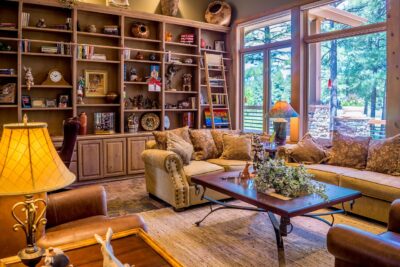
How to Retrofit Old LED Fixtures with Modern Covers
How to Retrofit Old LED Fixtures with Modern Covers By Aman | Updated on April 15th 2025 LED lighting has pretty much taken over the
Home » Color Psychology for Choosing the Right Colors for Lighting
The spaces we inhabit profoundly influence our mood, behavior, and overall well-being. Whether it’s a cozy living room, a productive home office, or a tranquil bedroom, the design choices we make—particularly when it comes to color psychology and lighting—can dramatically impact how we feel and function.
Colors have psychological effects that evoke emotions and set the tone for any environment. However, these effects are intricately tied to lighting. The interplay between lighting colors and light cover colors is essential to creating the ambiance and functionality of a space. Understanding how to leverage these elements allows you to design interiors that harmonize with their intended purposes.
This guide explores the principles of color psychology, the influence of lighting on color perception, and practical tips for choosing the right colors and lighting for your home or workspace.
Colors are more than aesthetic choices—they are tools that influence mood, behavior, and perception. Each color evokes a specific psychological response, and understanding these associations is key to designing spaces that serve their purpose.
The psychological effects of light color amplify these associations, as the type of lighting can either enhance or diminish the emotional impact of a chosen color.
Lighting is as critical as color itself in defining the ambiance of a room. The same shade can appear vastly different under varying lighting conditions, making it essential to understand how light affects color perception.
Each room in a home or workspace serves a unique purpose, and the colors you choose should reflect its intended use. Here’s how to align color and mood with functionality:
Choosing the right colors and lighting for your spaces is a powerful way to enhance mood, functionality, and overall ambiance. By applying principles of color psychology and understanding the impact of lighting on color perception, you can design interiors that resonate with purpose and emotion. The thoughtful combination of lighting colors and carefully selected hues transforms ordinary spaces into harmonious environments.
To further optimize your lighting setup, prefer high-quality replacement light covers and diffusers. Tailored solutions, like those offered by Fluorolite, enhance both the aesthetic and functionality of your lighting, making it easier to achieve the perfect balance of light and color in any room. With the right tools, creating your ideal space becomes seamless and effective.
Color psychology defines the mood and energy of a space, influencing emotions and behavior.
Soft blues, greens, and lavenders create a tranquil atmosphere conducive to relaxation.
Yes, lighting significantly impacts how colors appear, altering their intensity and tone.
Test colors in various lighting conditions and use light covers to diffuse artificial light effectively.
Light covers not only diffuse light evenly but also enhance the aesthetic of the room by reducing glare and creating a cohesive lighting design. Fluorolite offers a range of customizable options to suit any space, ensuring both style and practicality.

How to Retrofit Old LED Fixtures with Modern Covers By Aman | Updated on April 15th 2025 LED lighting has pretty much taken over the

How to Prevent Yellowing and Cracks in LED Fixture Lenses By Aman | Updated on April 15th 2025 You’ve probably seen it before—those once-clear LED

How to Choose LED Fixture Lenses for Harsh Industrial Environments By Aman | Updated on April 8th 2025 Ever stepped into a factory or a
"We've Got You Covered" and Trace n'Fax are Registered Trademarks of Fluorolite Plastics, LLC. © 2011-2024 All rights reserved Fluorolite Plastics